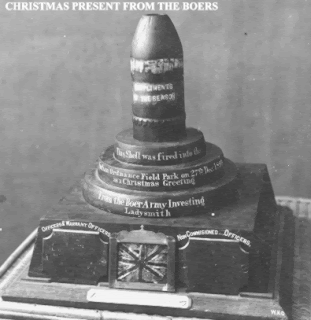Arrival and Departure of the
Natal
This screw-steamer, part of the General Screw
Company Cape-Natal line, first appeared in March 1854, followed some 8 months
later by a sister-ship, the Cape of Good Hope, which had been carrying troops
from England to Malta. At the time of this report, April 1854, both the Natal and the Cape of Good Hope were employed on the
coastal service between Table Bay and Natal.
The Natal was not long seen in South African
waters as the General Screw Company withdrew from the Cape
and disappeared altogether in 1857. The Natal
was chartered to the French Government and finally wrecked on the Spanish coast
in March 1855 on her way to the Crimea. There was another later ship named Natal,
a coaster of the Union Line, built in 1866.
Natal Mercury 12 April 1854
SHIPPING
INTELLIGENCE
ARRIVED
April 6 - Natal, scr-steamer, 680 tons,
Lowen, - from Table Bay.
PASSENGERS
Cabin
Miss and Mr Churchill
Masters Shepstone (2)
Master Goodricke
Mr Durrant
Capt Glanville (45th Regt)
Ensign Close (45th Regt)
Messrs
Rademeyer
Kuhr
Lawton
Miss Dunn
Miss Ellerman
Mrs Miller and 2 children
Fore-cabin
Messrs
Archbald
Lutridge
E Snell, agent.
Apr 12 - Gitana, schr. -
Mitchell,
from Table
Bay - Cargo, sundries.
John Brown, agent.
SAILED
April 10 - Natal, scr-stmr. 680 tons,
Lowen - for Table Bay
PASSENGERS
Cabin
The Lord Bishop of Natal
Messrs
Lamport
Clerk
Madigan
Deck
Mr Clerk's servant
the Bishop's servant
Mr and Mrs Williams
Mr and Mrs Simons and 2
children
Mr Pepworth
Mr Scorgie and son
2 coloured women
1 woman, child and infant
For Algoa Bay
Mrs Griffin
Miss Cato
Miss Lake
VESSELS EXPECTED
Jane Morice, bq. 256 tons, -
Captain Joseph Browne - to sail from Liverpool
about Feb 14.
EP Lamport, agent.
Leontine Mary, schr. 29
tons, - Baragwanath, - from Algoa
Bay.
E Snell, agent.
Anne, schr. 99 tons, -
Cameron - from Table Bay.
J Brown, agent.
Heath, bq. 307 tons, - W
Whightman, - from London,
- to sail on the 1st March.
John Millar and Co. agents.
BIRTHS
On the 6th instant, the lady
of William Smerdon, Esq., of this place, of a son.
………….
The Natal
Mercury, Durban,
Wednesday, 12 April, 1854
Arrival of the Natal. [includes reference to wreck of the Australian]
This long expected namesake
steamed round the Bluff shortly after 12 o'clock at noon, on Thursday, the 7th
inst., and immediately crossed the Bar to the inner anchorage, although it was
at the time low water of neap tides. This fact, accomplished without difficulty
or danger by a vessel of 700 tons burden, is an appropriate practical
commentary on the letters we have lately published, by the Resident Engineer of
the Harbour Works, and a satisfactory illustration of the effects already
produced by those Works, even in their present comparatively incipient state.
The Natal is a remarkably fine vessel, and
besides having capacity for a large cargo - a great desideratum at present to
our Colonial trade - she possesses ample and elegant accommodation for
passengers. On this subject, and with reference to her general management, we
elsewhere publish the testimonial of her recent passengers.
The Natal
arrived at the Cape on the 20th March, and left with our Mails on the 27th, two
days after the arrival of the Argo from England. She encountered heavy
south easterly gales after she left the Cape,
which occasioned her passage to be protracted to nine days.
The Peel which left this
Port on the 22nd, had been fortunate in her run, having touched at Mossel Bay a
day before the Natal arrived there; and as the wind, which was unfavourable for
the Natal, was most propitious for the Peel [Sir Robert Peel steamer], it is highly probable that the
latter would reach Table Bay in time to put the Mails on board the Lady
Jocelyn, the homeward bound steamer which was to leave on the night of the
27th, the day on which the Natal left; but the south eastern blowing, would
probably detain her, - and this is another circumstance favouring the
probability of our mails being in time to be forwarded by her.
The Anne, Capt Cameron, had
made a quick passage of nine days from this Port, having arrived on the 22nd
ulto, and of course therefore in time for the English Mail. The Anne was
reloading for Port Natal, and the Gitana was also chartered to bring cargo
waiting for shipment. Both vessels may be expected daily.
The Natal met on the other
side of Mossel Bay the Australian steamer, Australian, from Melbourne and
Sydney, which had put into Algoa Bay for coals; and on the arrival of the Natal
at the latter place, the disastrous news had arrived overland of the wreck of
the Australian, which, through some at present unexplained mischance, had been
run upon the rocks at Green Point at the entrance to Table Bay. The night was
clear and fine; and the passengers and cargo, including a large quantity of
gold, were all saved; but it was believed that this fine but singularly
unfortunate vessel would be a total wreck.


































